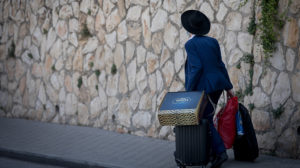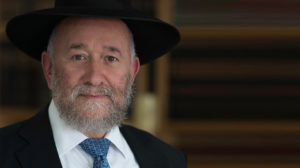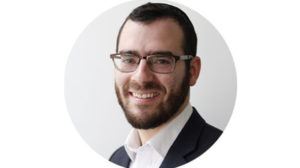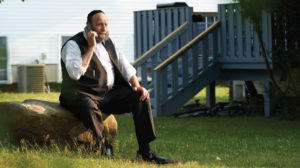Dead or Alive?


I t is a question that had been nagging me for 35 years.
I had the great zechus to realize my dream of learning in the Ponevezh yeshivah and basking in the glow of the gadol hador Rav Shach ztz”l. Novice that I was I found it difficult to make out the Rosh Yeshiva’s raspy voice and concentrate on the material at the same time. As a matter of practicality I would look into the Avi Ezri Rav Shach’s magnum opus on the Rambam and invariably find the very shiur I had just heard.
If the shiurim already existed in his sefer why was Rav Shach so engrossed the entire day of the shiur in preparing it to the point that he was absolutely unapproachable in another zone? Why didn’t he merely look into his own sefer to see how he already dealt with the same thorny sugyos he was presenting to us? I would never dare ask him. My newfound friends suggested that he liked going through the sugya from scratch to renew the freshness but his brain was wired to think the same way every time. I wanted more though.
This past Chanukah my quest came to an end. My beloved talmidim gave me a set of seforim containing Rav Shach’s shiurim from his later years including a thin volume of his last shmuessen entitled Hi Sichasi. To my great pleasure I saw that my question had been posed to him by a maggid shiur in Eretz Yisrael. The Rosh Yeshivah responded with another question: “Why do I bother giving a shiur at all? You could look up all of the relevant yesodos in the Rishonim and Ketzos Hachoshen without me!”
The answer Rav Shach offered is that Torah must be ALIVE in order for it to be given over from rebbi to talmid or father to son. When a maggid shiur analyzes a sugya and presents it with his entire being it is alive a Toras Chaim. Reading a vort out of a sefer even if it’s your own cannot substitute. Live in “real time ” is the only way to transmit Torah to the next generation — or for that matter even to yourself.
Although Rav Shach was discussing limud haTorah I would humbly suggest that it doesn’t stop there.
Thousands upon thousands of meetings discussions and frustrating conversations have been taking place over youths who are living a hollow Judaism. Way too many of our young men and women have been forthcoming enough to admit that they are truly not “feeling it” but simply “doing it.”
Those of us who choose to stick our heads in the sand and ignore this phenomenon claiming that it is an over-exaggeration that we are manufacturing a new “crisis” are not being honest or fair. Dare ask some of our finest youngsters and the answers can be frightening. This is not in fact a new crisis as much as it is the root cause of most existing crises. I have heard of many polls taken of yeshivah and Bais Yaakov students asking how they feel about Yiddishkeit and whether they would choose to be born a Jew if given that choice. The kids responding to these questions are by and large good kids. They want to give their parents nachas and they behave like yeshivah or Bais Yaakov students. Nevertheless the responses to these questions point to a sad reality: Too many people’s Yiddishkeit is dead inside.
Against the backdrop of this depressing thought it is encouraging to be aware that many kids are thirsting for more. Just recently a bochur inquired what my next Mishpachah article was going to address. I responded that it would be about making our Yiddishkeit alive and not hollow. His immediate reaction? “How? How?”
I recall a conversation with Rav Mattisyahu Salomon shlita (may he be zocheh to a refuah sheleimah) close to 20 years ago when I was an eighth-grade rebbi. He asked me about my Chumash curriculum and I shared how much I was expected to cover. His stunning response: “Learn Sefer HaChinuch!” He explained “Do you know why so many bochurim have no taam in Torah and mitzvos? Because they have no idea what they are doing or why they are doing it!” I saw the peiros of this suggestion after putting it in practice.
It should neither start nor stop there however. We must engage our children and students into the world of Toras Chaim whether it is the philosophy behind the restrictions of melachah on Shabbos fasting on Asarah B’Teves or maachalos asuros. If we content ourselves with superficiality over substance we will chas v’shalom ultimately wind up with neither.
Our exuberance over Torah and mitzvos is the greatest living example of Toras Chaim. The Ponovezher Rav ztz”l related that his resolve to become a talmid chacham came about as a result of delivering mishloach manos as an 11-year-old child to the rav of his city. When the rav received the mishloach manos which was accompanied by a box of candles (a precious commodity at that time) and a new Gemara Bava Basra tears streamed down his face as he expressed his joy at being able to learn at night with a quality Gemara! The impressionable young child was hooked — he felt ahavas haTorah heart-to-heart.
Unfortunately not everyone in our community has experienced such contagious exuberance about Torah and mitzvos. Just because we see someone going to shul it is not a given that he davens or davens with any purpose. Nor is it a given that a boy who wears a $300 black hat on Shabbos has a geshmak in Shabbos even if he would never dream of being mechalel Shabbos. And we can’t assume that just because our daughters look “aidel ” they have an appreciation for the nobility of tzniyus in actions as well as in dress.
Do they feel Jewish or just do Jewish? Are we explaining to their minds and appealing to their hearts in order to arm them with the ammunition to withstand contemporary society’s assault on their neshamos? Don’t assume anything. Even if they go through the nachas motions and want to make us proud they may be devoid of emotion for what they are doing.
At the recent Midwest Agudah Convention Rabbi Menachem Greenblatt of St. Louis related that after a panel discussion in seminary a group of girls expressed amazement at the beauty and depth of our mitzvos something they felt had not been sufficiently imparted to them earlier on. Schools and parents think they are doing a good job and in many respects they are. But in today’s world we must all rethink how to make our Torah more alive and meaningful in order to bequeath to our successors the fervor and commitment that is critical to continuing to transmit our mesorah to future generations. If they do not feel the beating heart of a Torah life then they are spiritually dead inside and it is just a matter of time until the charade of “doing it” comes to a sad ending whether in the current generation or a future one.
The Bach (Orach Chaim 47) tells us that it was exactly this type of superficiality that caused the Churban: “They engaged in Torah only for their own pleasure to know the halachos to run their business and to show off their wisdom but not to cling to the holiness and spirituality of the Torah and draw the Shechinah down in order to elevate their souls after their death. The land remained bereft of kedushah.”
It is time for all of us to make a cheshbon hanefesh regarding where we stand ourselves and if we are projecting any substance or also merely going through the motions. It does begin with us but it doesn’t always end there; there is no one-size-fits-all panacea. But every individual and certainly anyone in a position of mentorship must evaluate whether the heart and soul of Torah and mitzvos is really coming through in their and their families’ Yiddishkeit.
When we say a vort at the Shabbos table are we perfunctorily reading out of a sefer or opening hearts and minds to what we are learning? (“Do you want to hear a fascinating kasha? What do you think the answer is?”) When we bentsh licht are we imparting to our children the warm feeling that we are embracing menuchas Shabbos?
We shouldn’t be bashful about expressing our feelings about ruchniyus. Yes our kids can pick up on unspoken emotion but how much more powerful is it when we exclaim how geshmak a mitzvah a Yom Tov or Torah learning is. When we notice one of the myriad small acts of Hashgachah that constantly surround us why not use that as a teaching moment while thanking Hashem? The more we do that the more we sensitize our children — and ourselves — to the reality of Yiddishkeit.
When we study a mitzvah we must internalize how it solidifies our relationship with Him. And when we teach mitzvos to our children we need to convey that there is actually something in it for everyone whether it is Hashem’s love or the beauty behind the various mitzvos.
Rav Michel Yehuda Lefkowitz ztz”l one of the foremost mechanchim of his generation would encourage fathers to make their child feel a deep sense of satisfaction after learning together even if the child made plenty of mistakes. He got his father’s love; there is something in it for him.
If we can all perceive Hashem’s love in the mitzvos we do and transmit that love to the next generation we will find ourselves — and our children — truly alive.
Rabbi Henoch Plotnik is the mara d’asra of Congregation Bais Tefila and a ram in Yeshivas Meor HaTorah in Chicago.
Oops! We could not locate your form.













